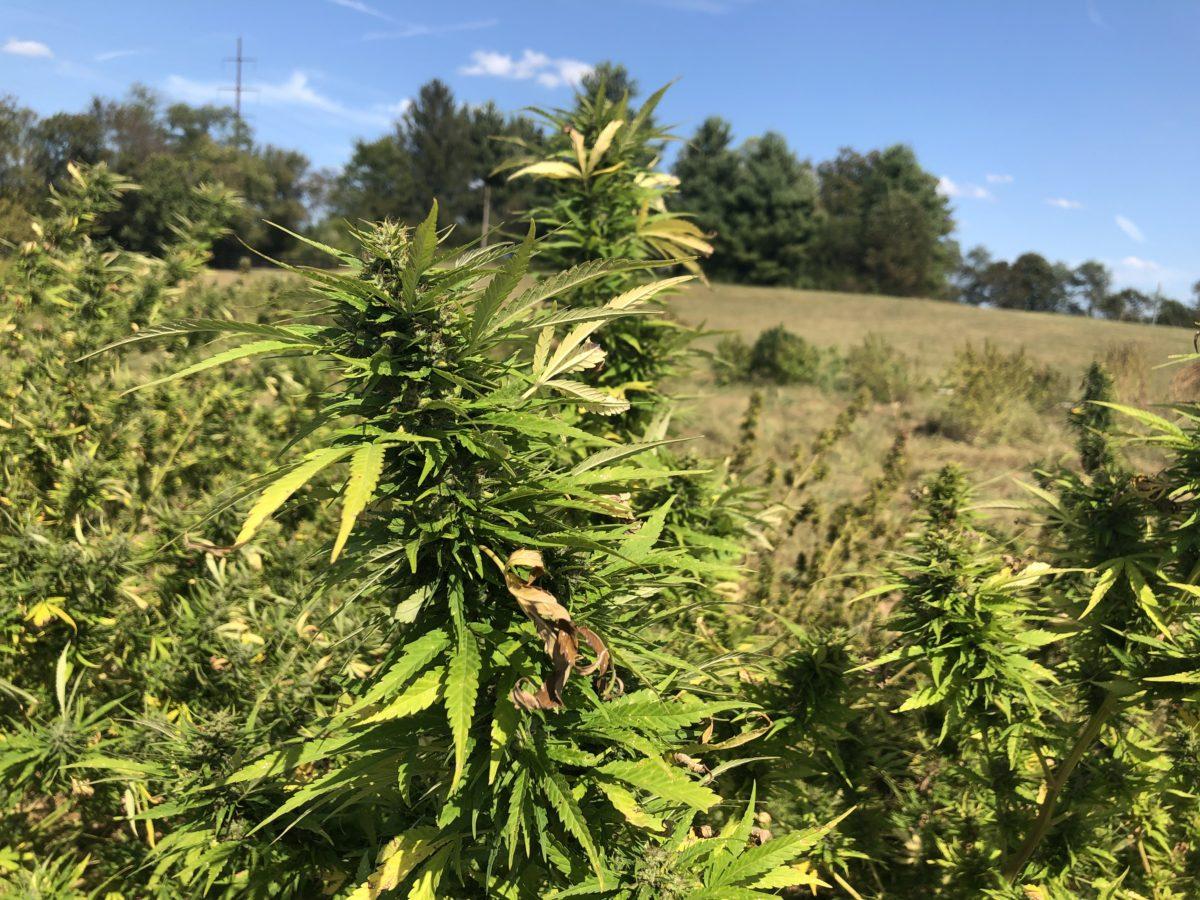Ohio Valley farmers planted more than 27,000 acres of hemp last year — about four times more than in 2018 — to cash in on a booming market for popular CBD products made from the crop.
Yet with that growing boom, the price of CBD-rich hemp has crashed, dropping more than 75 percent in just 6 months. Many farmers are now feeling the financial pinch of that bust.

A report from Colorado-based analytics firm PanXchange said Kentucky farmers last July on average could get $4.35 for each percent of CBD in each pound of hemp. For example, if a pound of hemp contained 6 percent CBD, then each pound of hemp could sell for about $26. Multiply that by thousands of pounds of harvested hemp, and the potential payday could be significant.
PanXchange now reports that as of December, the average price over the past six months has tanked to a little less than a dollar.
“That’s a huge change,” said Tyler Mark, a University of Kentucky Agricultural Economist who saw a similar dropoff in tracking prices himself. “If price drops or that percent CBD drops, those budgets can go negative pretty quickly.”
He said more than 90 percent of Kentucky hemp farmers grew the new crop for CBD because of potential profits. The price crashed mostly because of the growing boom and resulting glut in supply. That supply hasn’t just come from the Ohio Valley but also across the country from other big hemp-producing states including Colorado and Montana. Ohio just legalized cultivation of hemp last summer.
“In 2019, we had 30-odd states with (hemp) production. In 2020, we’re gonna have almost all states in the U.S. could potentially be producing hemp,” Mark said. “There’s winners and losers, and there could be more losers than winners for a while.”
Mark also said the large amount of hemp grown this year challenged the processing companies that turn the hemp into CBD. Some companies are being selective about the hemp they take.
Because of this price crash, some Ohio Valley farmers are sitting on thousands of pounds of harvested hemp, waiting for the price to recover in an effort to reduce their losses from their harvest.
“People were offering pennies on the dollar, and you know what? At this point I’ll burn it before I give it away,” said Tony Silvernail, an organic hemp farmer near Frankfort, Kentucky. “I think so many people jumped into it, and I think a lot of people will be jumping out, too. It’s going to be sort of crazy because you’re going to get those wild swings.”
Silvernail helps run a cooperative of hemp farmers in central Kentucky, where he said many growers are sitting on their harvests while prices are low.
West Virginia only planted 641 acres of hemp last year but also saw a lot of new growers. West Virginia Commissioner of Agriculture Kent Leonhardt said it may take several years for the industry to stabilize and avoid these price swings.
“Farmers have bought on that this is something that they can make a lot of money with over night. They went in and grew too much in the first year,” Leonhardt said. “Once 2020 is over, you’re going to see a leveling off of regulations and more balance between the states.”
Some of the uncertainty with regulation comes from whether hemp-producing states are going to regulate their industry under pilot programs founded in the 2014 Farm Bill or adopt new federal regulations proposed under the 2018 Farm Bill.
Kentucky Hemp Industries Association sent an open letter this month to the Kentucky Department of Agriculture, asking the department to continue operating under the state’s 2014 pilot program. The association claims newer federal regulations were unworkable with regard to testing and harvesting the crop.
Agricultural officials announced Tuesday that the state would continue to operate under their pilot program and move toward making “the final rule as workable as possible in accordance with the Farm Bill.” Ohio had their state plan to regulate hemp approved by the U.S. Department of Agriculture last month.
(This story first ran on WKMS, the public radio station at Murray State University.)
Liam Niemeyer is a reporter for the Ohio Valley Resource covering agriculture and infrastructure in Ohio, Kentucky and West Virginia and also serves Assistant News Director at WKMS. He has reported for public radio stations across the country from Appalachia to Alaska, most recently as a reporter for WOUB Public Media in Athens, Ohio. He is a recent alumnus of Ohio University and enjoys playing tenor saxophone in various jazz groups.






